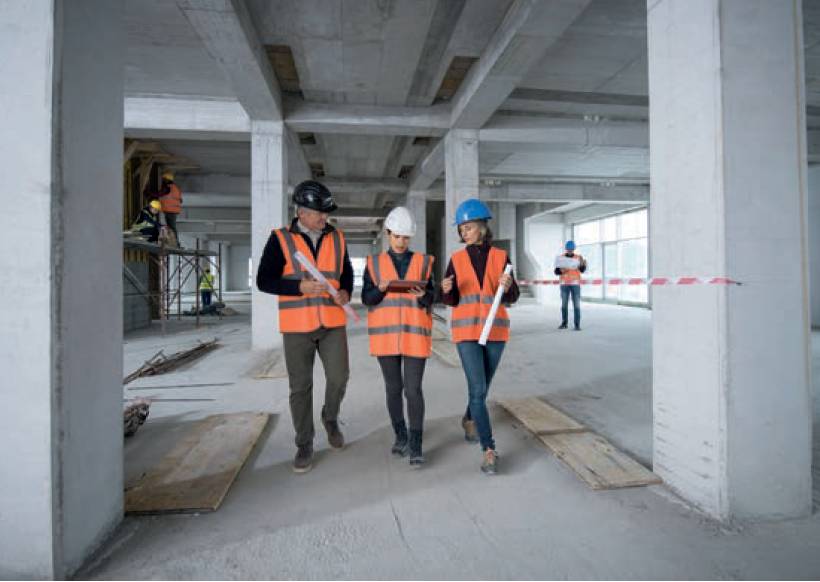Getting to grips with expiring PFI
Tom Aburrow-Newman, Gordian UK Senior Account Executive

THE spectre of the proverbial elephant in the room for many holders of private finance initiative (PFI) and public-private partnership (PPP) contracts in the UK is looming ever larger.
2023 will see that shadow continue to increasingly consume precious human and technological resources as surveys, contractors and facilities owners struggle to get to grips with facility hand backs that they agreed to decades ago, but with little thought that the day would come, at least in the form they were agreed to in the 1990s and 2000s.
It’s a bit like ignoring a knocking noise on the family car that’s slowly getting louder and louder. You have hope rather than expectation that it will either go away on its own, or when it finally needs to be fixed, will be someone else’s problem to solve.
In the case of PFI and PPP, neither has been the case, and the irrevocable due dates will soon arrive. And it’s not like they are a surprise. The agreements have been embedded for decades.
What is, however, surprising is that so many have left it so late to address the terms of those agreements and are now scrambling to make good on those promises.
The public infrastructure construction boom that took place as a result of enabling the public sector to bypass fronting the capital costs of major projects due to PFIs in the 90s are beginning to fizzle. As we begin 2023, only a handful of many hundreds of facilities projects are anywhere near ready to be handed back.

Time to rethink
It is therefore time for the PFI world to rethink how to resolve the ultimate fate of projects proposed, designed and built under 20th-century schemes to either extend their operational life and take on the attached obligations, or sell the asset and lick the resulting wounds. Fortunately, there are tools, technologies and techniques that can aid in the hand back process, if they are taken up and deployed soon.
Only a thorough and accurate assessment, using highly accurate digital tools that didn’t exist during construction, is the fastest, most accurate and most efficient way to answer these questions.
Although the breadth of those projects spans from waste management, prisons, and even defence satellites, the predominant PFI-funded sectors involve healthcare and education facilities.
Gordian has been deeply involved within the education sector, and its Kykloud mobile surveying and inspection solution is currently being used on the DfEs Condition Data Collection (CDC) programme across every school and further education college in England. That’s a major deployment, to be sure, but that leaves many other sectors to be addressed – and assessed – soon.
But although there is a great deal of surveying to be done, it’s best to start at the beginning, i.e., determining if a particular system genuinely has a future. With the best of intentions, the expectations of facility functionality, no matter what sector they are in, are very likely to have changed over the years.
For example, the internet was only just beginning to emerge for mainstream usage in the early 90s. Concepts such as digital infrastructures – let alone wireless ones – existed only in the minds of futurists scientists and engineers at conferences and TED Talks.
Accurate assessment
Even though a facility may be suitably equipped today, albeit in an incremental, patchwork way, the question remains not only if the current custodian has looked after the facility appropriately, but whether it’s really able to grow and absorb the demands that will soon be placed on it following hand back. Only a thorough and accurate assessment, using highly accurate digital tools that didn’t exist during construction, is the fastest, most accurate and most efficient way to answer these questions.
Streamline the data collection process with Gordian’s Kykloud solution. Build customisable survey forms and templates and run reports on your organisation’s budget, cost and spend.
Determining if – in its current state - a PFIoriginated asset has a viable future may appear to be an easy question to answer. Particularly in sectors such as highways, but it becomes more complex for facilities that are occupied and utilised by human beings.
The changing nature of the workplace, especially in recent years, will continue to have profound effects on nearly every useable space, for example, office design and usage.
As I have already suggested, things have changed dramatically in the last 30 years, so there is a good chance that a considerable number of PFI assets will need considerable redevelopment to remain efficient and viable facilities for the new generation.
That means that decisions such as how much capital to invest in an asset beyond the limit of contractual obligations must be made, in many cases very quickly as PFI contracts approach their expiry date.

Typically, PFI-originated assets transfer to the public sector on expiry of the contract (although that’s not always the case) but when a public sector occupant will be taking on the ownership, they might also take a different view on requirements concerning condition.
This is because the asset may of course present a significant financial and practical challenge if there are deeply rooted issues that will require considerable capital expenditure to enable the facility’s continued use - considerable capital expenditure that the private organisations might have been reluctant to invest.
That is why it is so crucial for surveyors to use the most accurate assessment tools available. The decisions that need to be made must be objective, and based on facts, that only the latest digital data gathering, analysis and modelling tools can offer.
Tools that weren’t available when an PFI project began can now be its saviour or write its eulogy.
Either way, these tools ensure that the right decision can be made swiftly, efficiently and profitably for all parties involved.

The bottom line
More consistent data capture and instant reporting can save your surveyors up to 60% of their time in the field, while the centralized web portal allows your home office to efficiently view and manage captured data at the site or portfolio level.
The bottom line for asset holders of any kind should be to gain an intimate knowledge of what they have as soon as possible.
Surveys that collect accurate detailed information on the state of play of both building fabric and M&E systems are invaluable as a basis for making informed decisions.
Decisions about how to deal with any identifiable issues regarding the condition of the asset, or the extent of contractor’s obligation to put them right.
Ideally, an asset can be handed back with pride, “... in a consistent condition with the performance by the contractor of its obligations”.
The answer to finding this ideal is wholly contained in the data collected by modern software assessment technologies, but only if they are deployed, and soon. In the case of PFIs, time is literally running out.
Tom Aburrow-Newman
Gordian UK Senior Account Executive
For more information on the latest surveying and facilities assessment technologies, contact Gordian at www.gordian.com/uk
All images courtesy of Gordian.